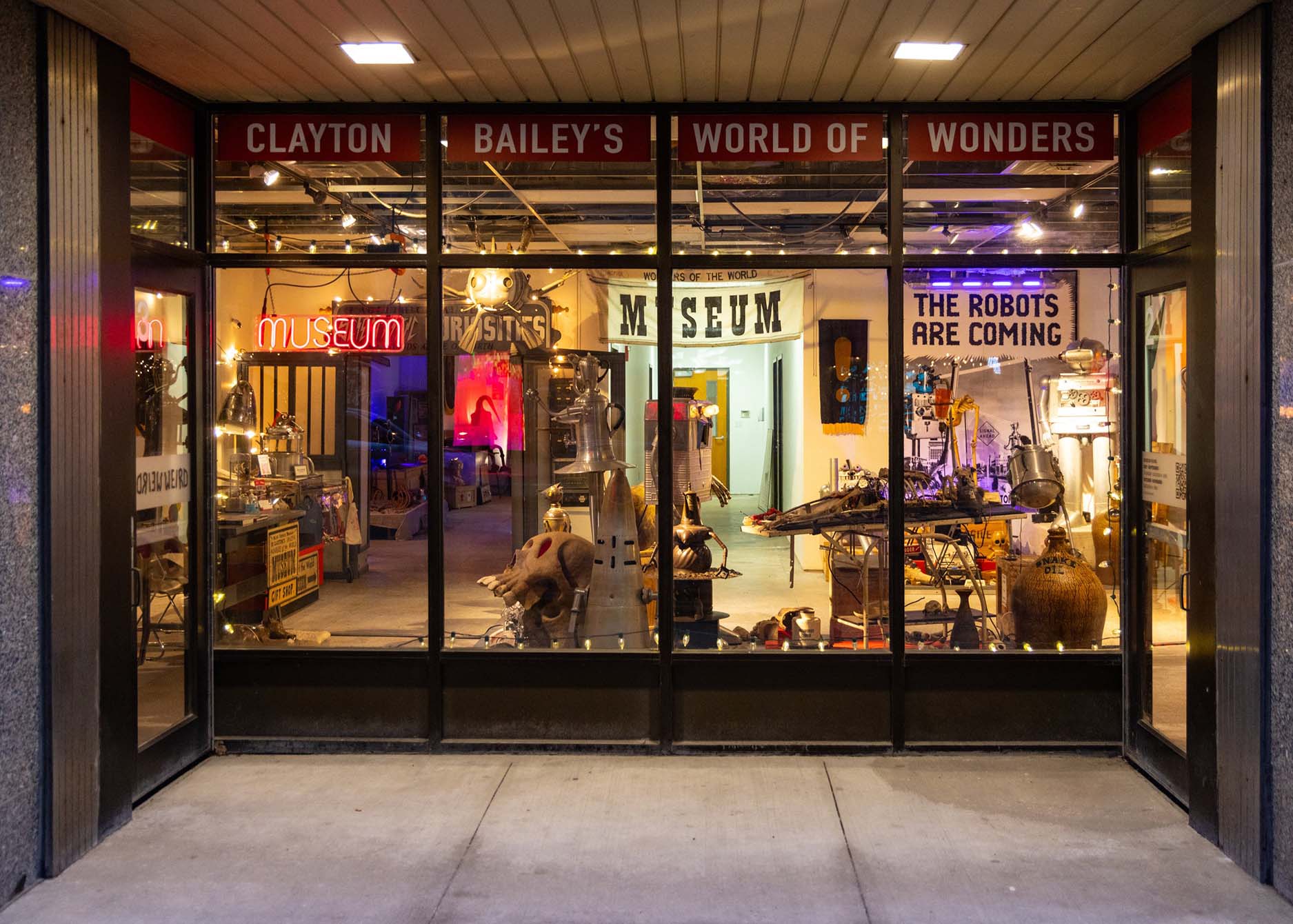

World of Wonders
Polsky Building
225 S Main St
Akron, OH 44308
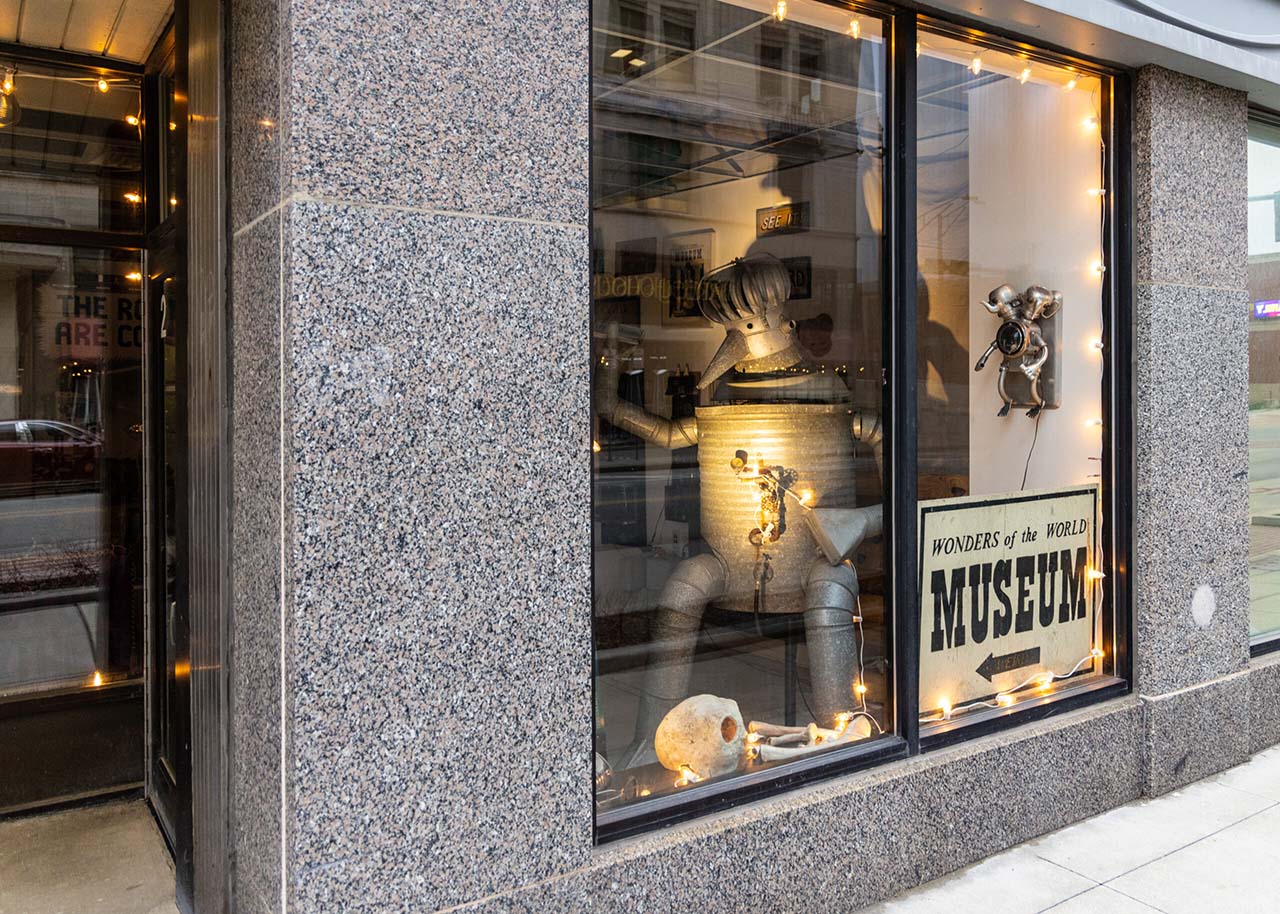
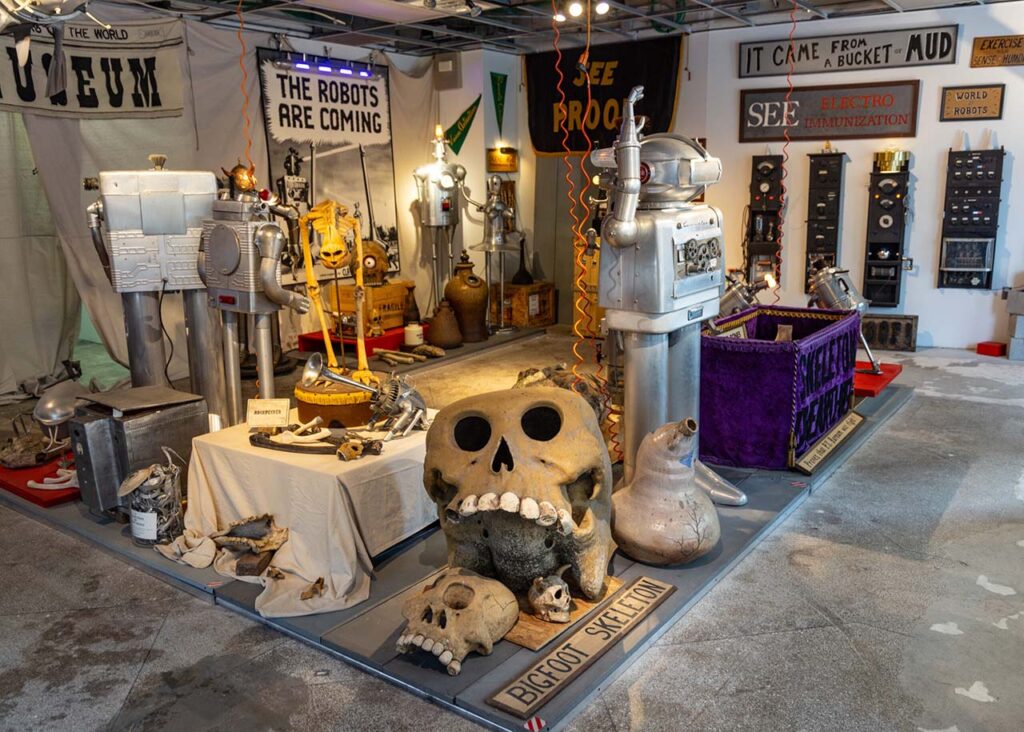
In 2021, Curated Storefront became the steward of a significant portion of Clayton Bailey’s fanciful and bizarre sculptures and ephemera, shortly after the artist’s passing. The arts organization, based in Akron, Ohio, moved quickly to display the newly acquired collection and reproduce an environment of curiosity through a new version of the World of Wonders Museum—originally created by Bailey in the 1970s on his property in California.
Just 2,500 miles from Bailey’s home in Port Costa, Curated Storefront Executive Director Richard Rogers and his team have re-created the World of Wonders Museum in the heart of downtown Akron—not only to honor Bailey’s legacy, but also to help usher in a new generation of cheeky, rule-breaking artists. The museum channels the spirit of Bailey’s eccentric sense of humor and invites people of all ages to escape the mundanity of everyday life and step into a world of the provocatively weird.
Curated Storefront’s collection offers a comprehensive representation of the many interests, phases, and mediums that shaped Clayton Bailey’s prolific oeuvre over more than five decades.
Born in 1939, Bailey spent his formative years in the small town of Antigo, Wisconsin, during the 1950s—an era that gave rise to Rock & Roll, Mad magazine, and an explosion of Hot Rod culture. He was heavily influenced by Mad, as well as other periodicals of the time such as Popular Science, Popular Mechanics, and the sharp satire of R. Crumb. Bailey began his ceramics career at the University of Wisconsin–Madison in the early 1960s and went on to become a leading figure in the Funk Art movement of the 1970s, known for his exquisitely crafted, absurdly humorous, and anti-mainstream sculptures.
Bailey approached ceramics like an inventor in the studio—he even received a patent for a novelty mug that sprays water in the user’s face—and experimented with various materials and processes.
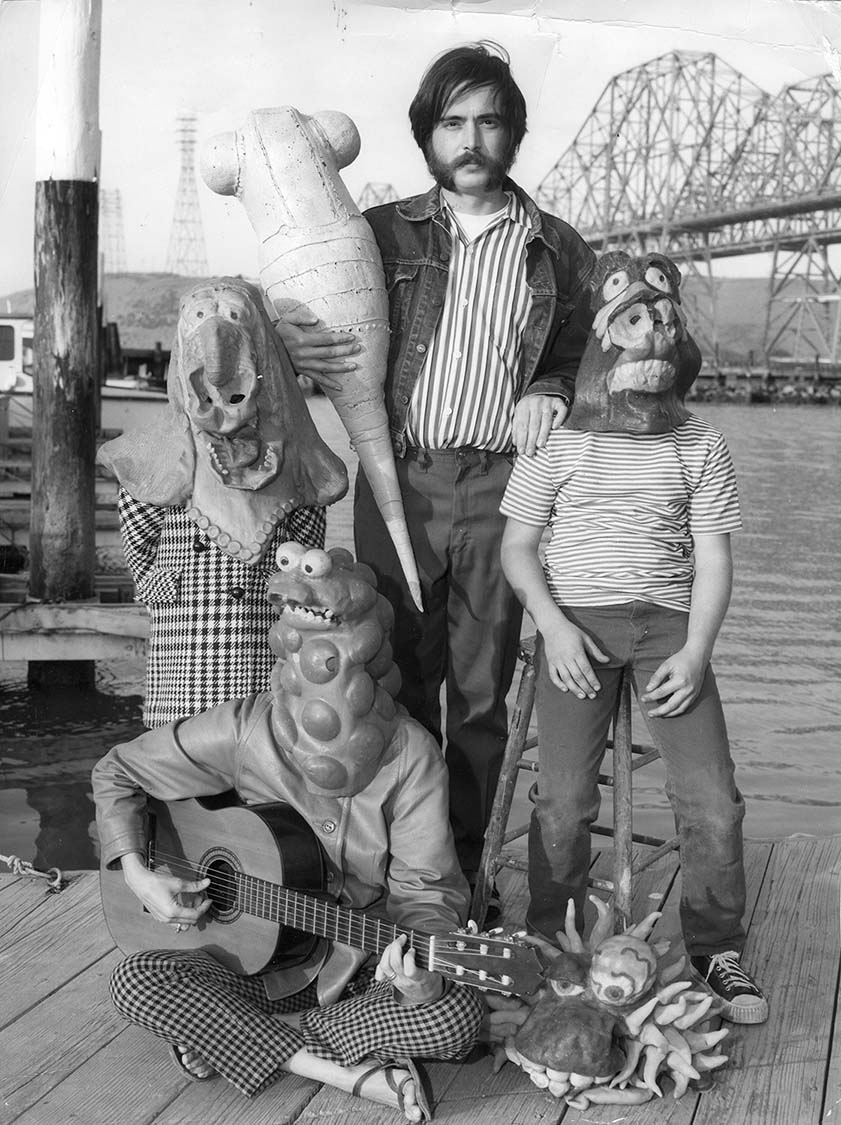
His series of Exploding Pots is a testament to how he pushed the technical boundaries of ceramics. Bailey tested the limits of the kiln through his experiments with “hyperthermic” clay and deliberate attempts to melt, slump, and crack the pots. These exploded jugs were often labeled with decals reading “Danger!” and “Radioactive,” creating the illusion that some kind of hazardous material was escaping the vessel. These intentional malfunctions required a high level of skill, and Bailey’s expert craftsmanship comes through in works like Photon Bottle Distillation Apparatus with Bottle (1990), which features a round glass window inserted into the clay, allowing viewers to peer inside and glimpse the “hazardous” material brewing within.
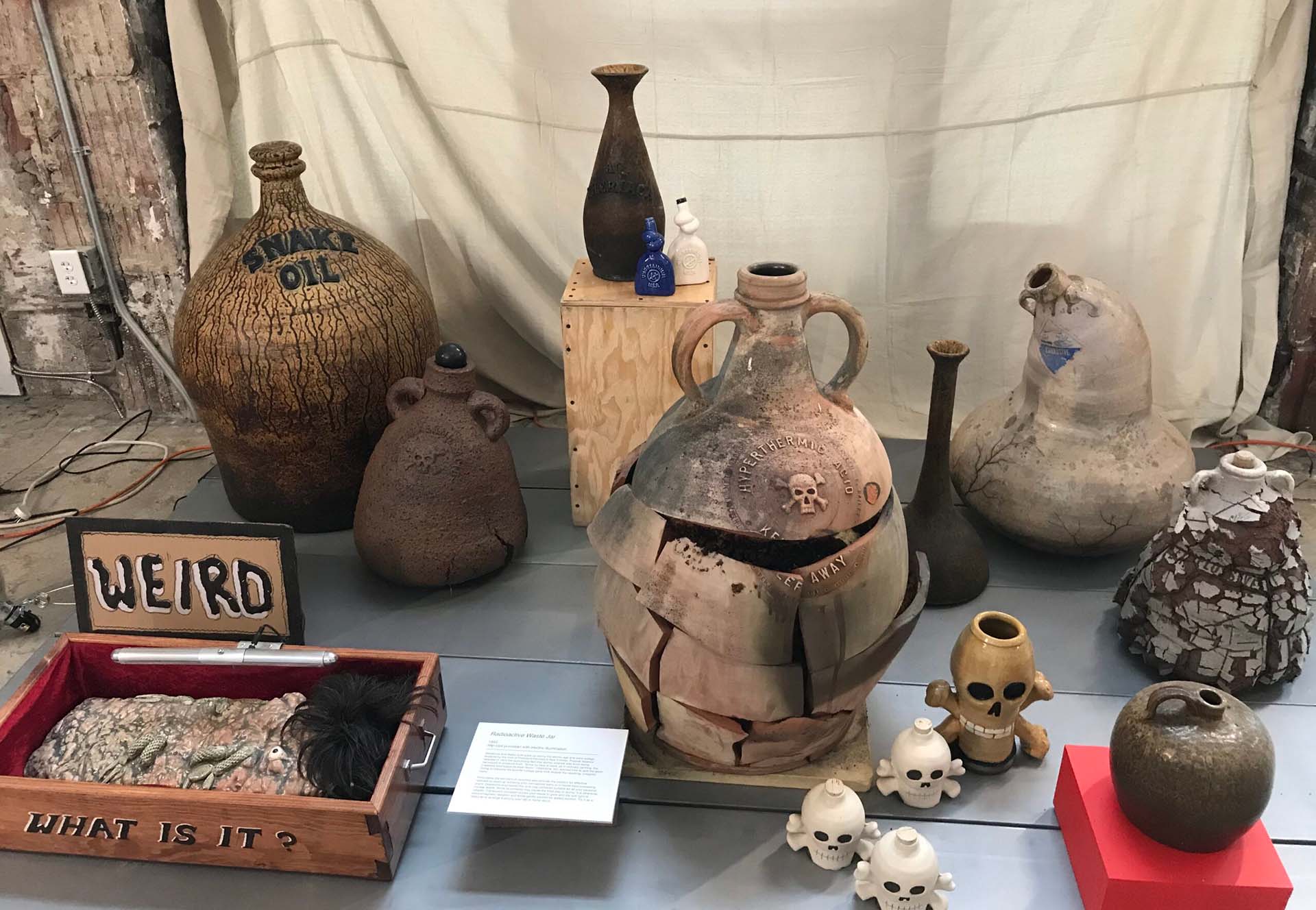

Another technical marvel was his kinetic Burping Bowl, a grotesque creature floating in a water fountain. Bailey made a series of these bowls in the 1960s, connecting them to aquarium pumps that built up pressure beneath the creature until it was released with a mighty belch, only to settle back into the water and endlessly repeat the process.
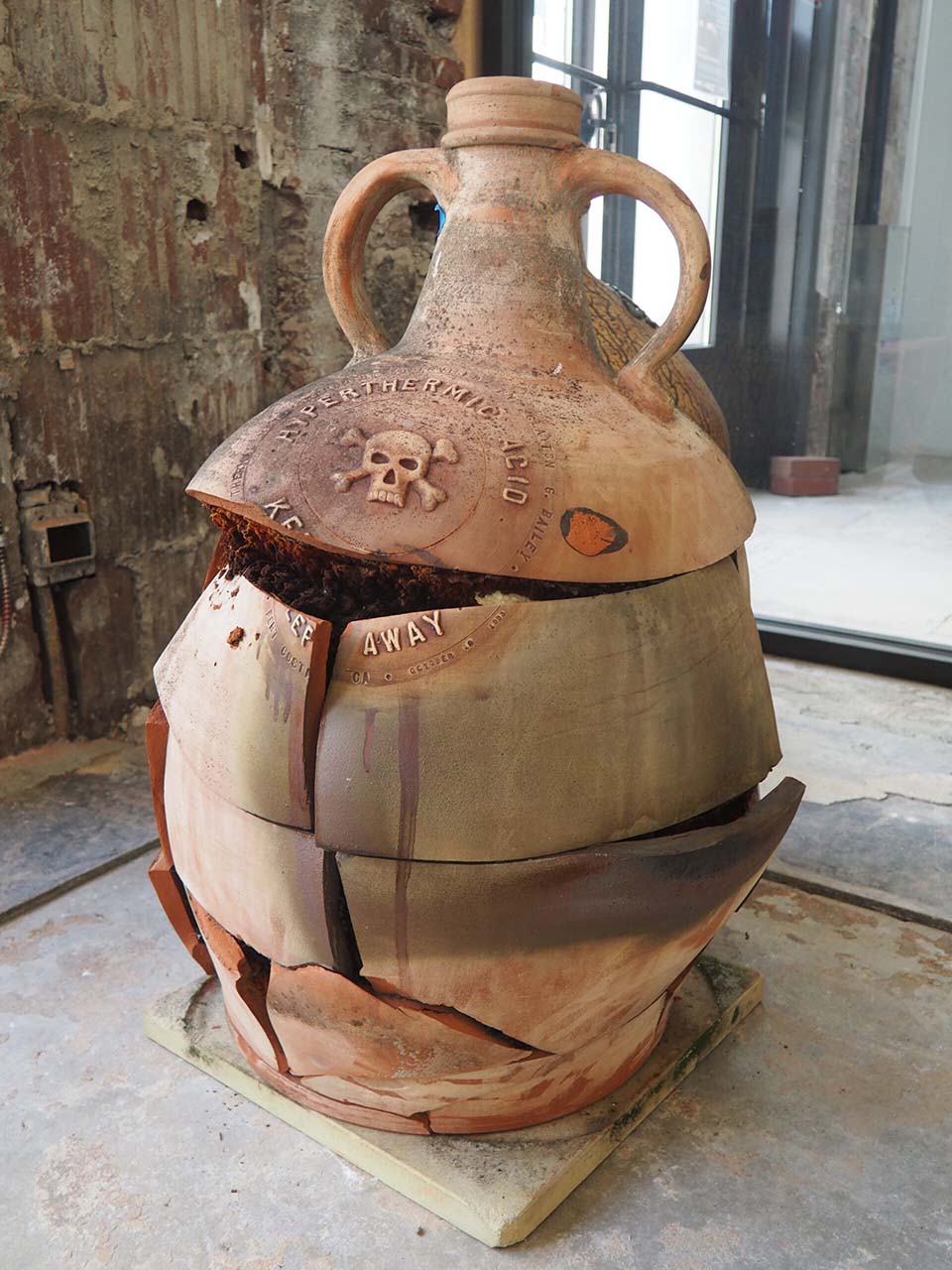
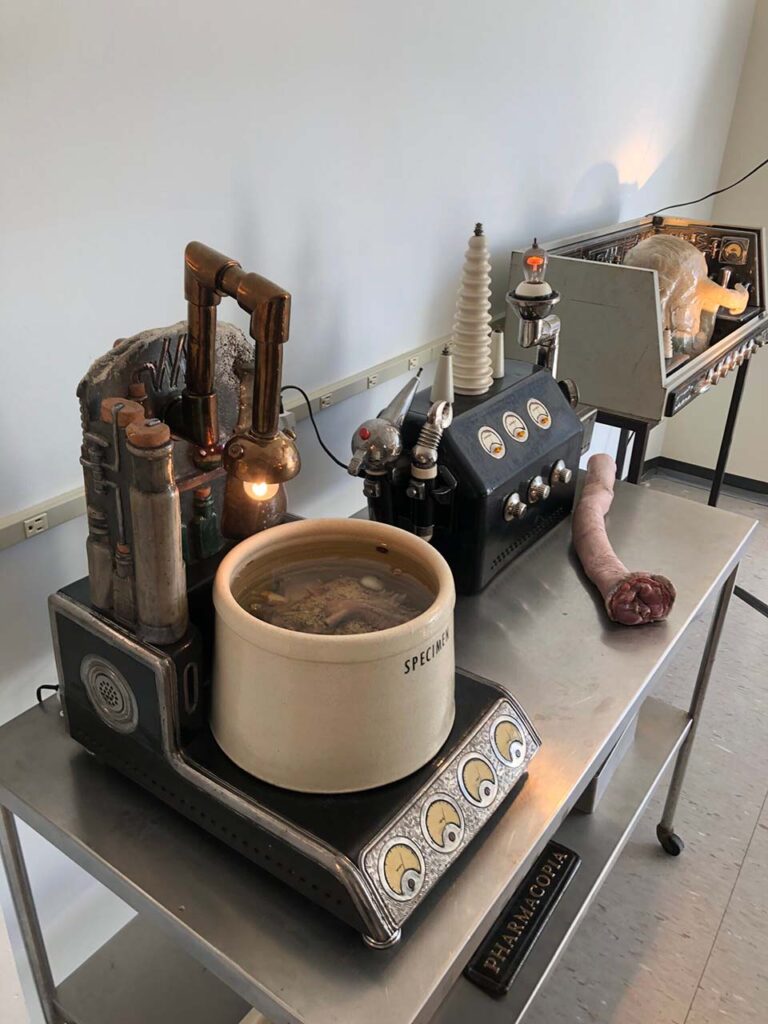
As a developing artist, Clayton Bailey attended workshops led by ceramicists Bernard Leach and Peter Voulkos, and ultimately became one of the originators of the Funk Art movement. While it’s true that Funk drew much of its star power from the San Francisco Bay Area, Bailey was arguably the first artist to discover Funk’s signature elements while still a student at the University of Wisconsin–Madison. Although others were exploring similar terrain, Bailey was the first to wedge Funk’s humor and absurdity into clay.
In 1963, artist Robert Arneson produced his first sculptural toilet, which was quickly followed by Bailey’s Nite Pots (1964), a series of tall urinals adorned with a pair of brightly colored lips as their orifice. Funk Art was a perfect vehicle during a time for rule-breaking across all mediums. Eventually settling in California and working amongst the genre-fusing, anti-conformist, and politically conscious art scene, Bailey continued to push the world of ceramics and sculpture beyond functionality or the abstract, incorporating his unique wit, sharp social commentary, and performative hijinks.
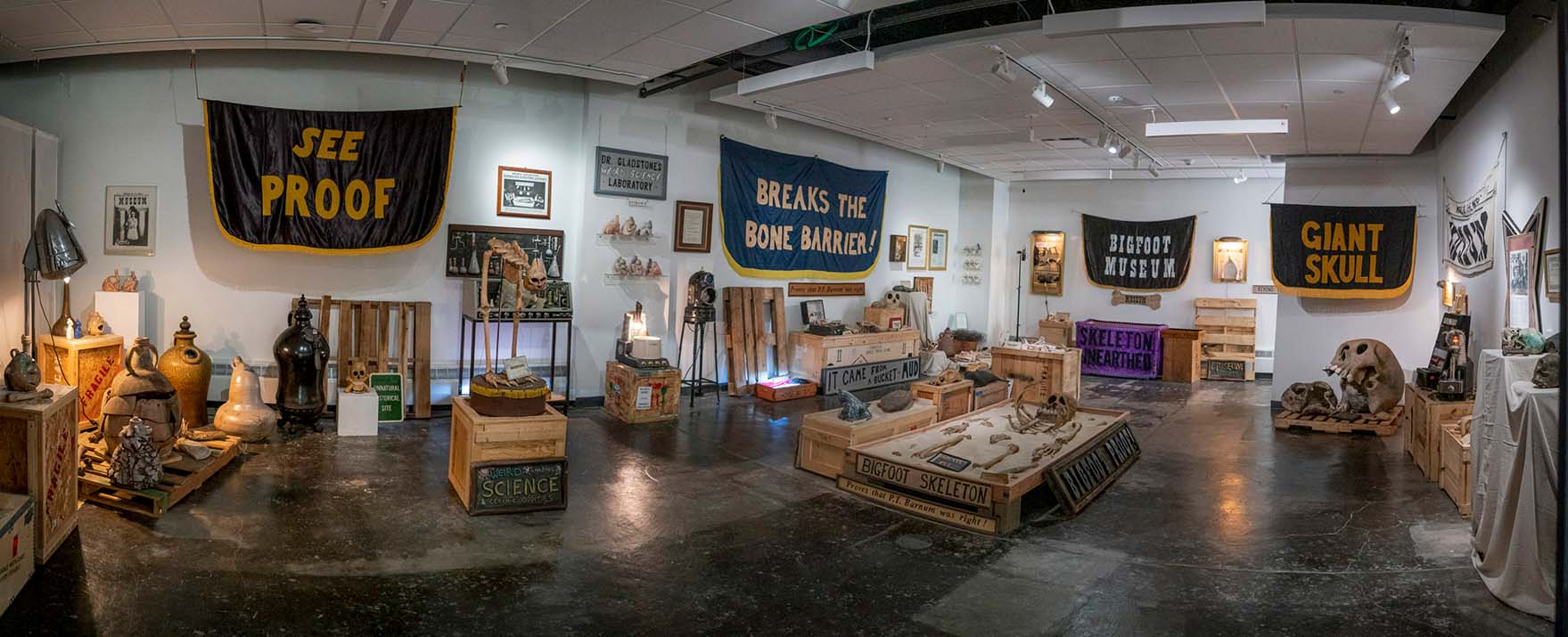
Leaning into the public’s fascination with Sasquatch and Bigfoot sightings in the 1970s, Bailey—working as his alter ego, Dr. George Gladstone—“unearthed” a Bigfoot skeleton on his property in Crockett, California. He invited the press to report on the discovery, presented as proof of Bigfoot’s existence, and displayed the evidence for the public to see. Dressed in his signature lab coat, Dr. Gladstone went on to discover the bones of other mythical creatures by applying the principles of “Kaolism,” the scientific study of thermally metamorphosed mud.
The famed Bigfoot Skeleton (1979), along with Giant Skull (1975), Cyclops (1976), and dozens of other “kaolithic” fossils and specimens from the Bone Age, are now on display at the World of Wonders Museum in Akron, Ohio—for believers and skeptics alike. Visitors can use Bailey’s Fossil Tester (date) to assess the authenticity of the finds: by placing findings in the machine, pressing a button, and watching the needle jump to “genuine,” they receive instant proof.” The Fossil Tester is one of many interactive sculptures inspired by novelty devices and fortune-telling machines found in pinball arcades.
During the “satanic panic” of the 1980s—when parents and politicians blamed Dungeons & Dragons and heavy metal music for abuses both real and imagined—Bailey created a series of novelty devices designed to “inoculate” users against evil. Fight Satan (1989) is a coin-operated sculpture of Satan that, when activated, displays burning Bibles accompanied by blood-curdling laughter, all meant to stimulate the production of “psychic antibodies” in the user’s mind.
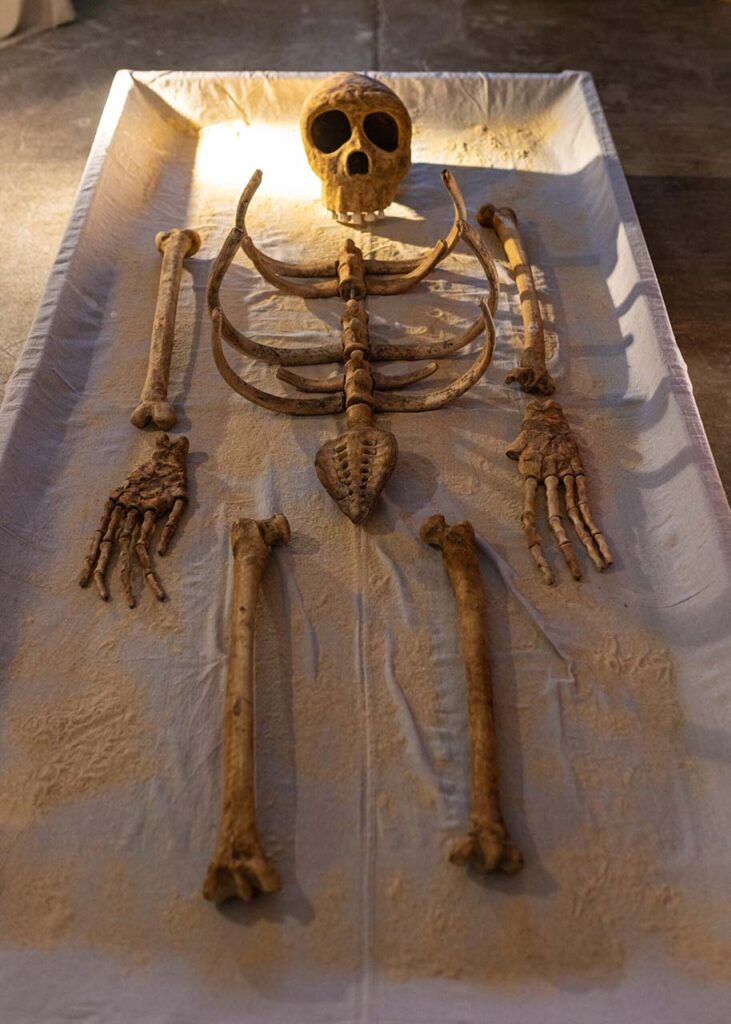

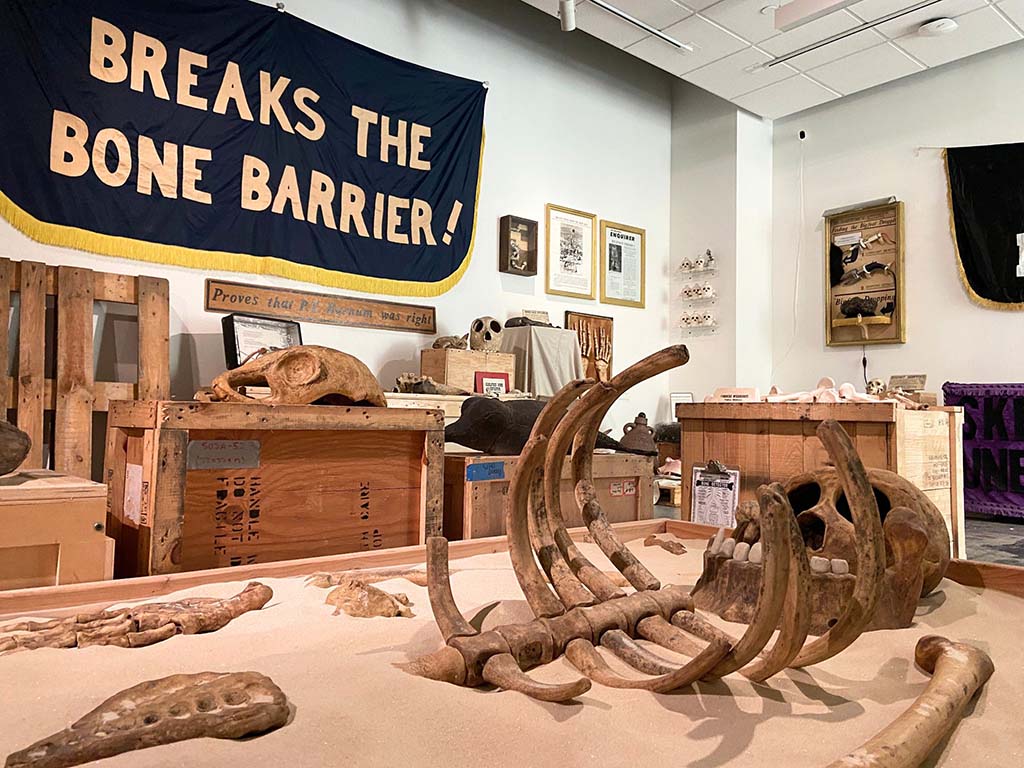

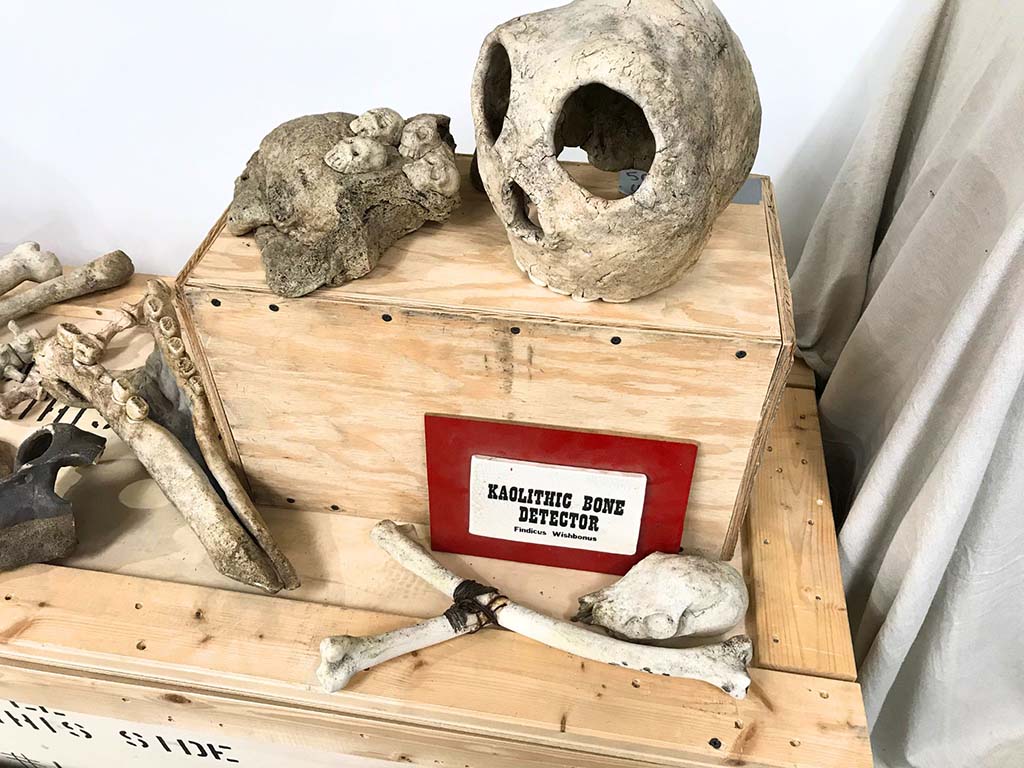
Bailey’s studio yielded a host of other novelties. A visit inevitably included target practice with an arsenal of air-powered, Buck Rogers–style Pop Guns, assembled from assorted tools and yard sale finds. After Bailey began incorporating metal and electrical components into his clay work, he embraced the medium fully and created a new series of robot sculptures. The first was On/Off (1976), a wearable robot suit that served as a carnival barker to drum up traffic. Worn by Bailey himself or his son Kurt, the life-sized robot would command passersby, often chasing them down the street to grab their attention. When a coin was inserted into On/Off’s slot, a souvenir postcard would emerge from a compartment in its chest.
On/Off proved so popular that Bailey went on to create an entire cast of robot characters, each varying in size, shape, and personality. He combed flea markets and junkyards for the shiniest cast-off chrome appliances and restaurant ware, seamlessly assembling them into sculptures that reflected the excesses and foibles of contemporary society.

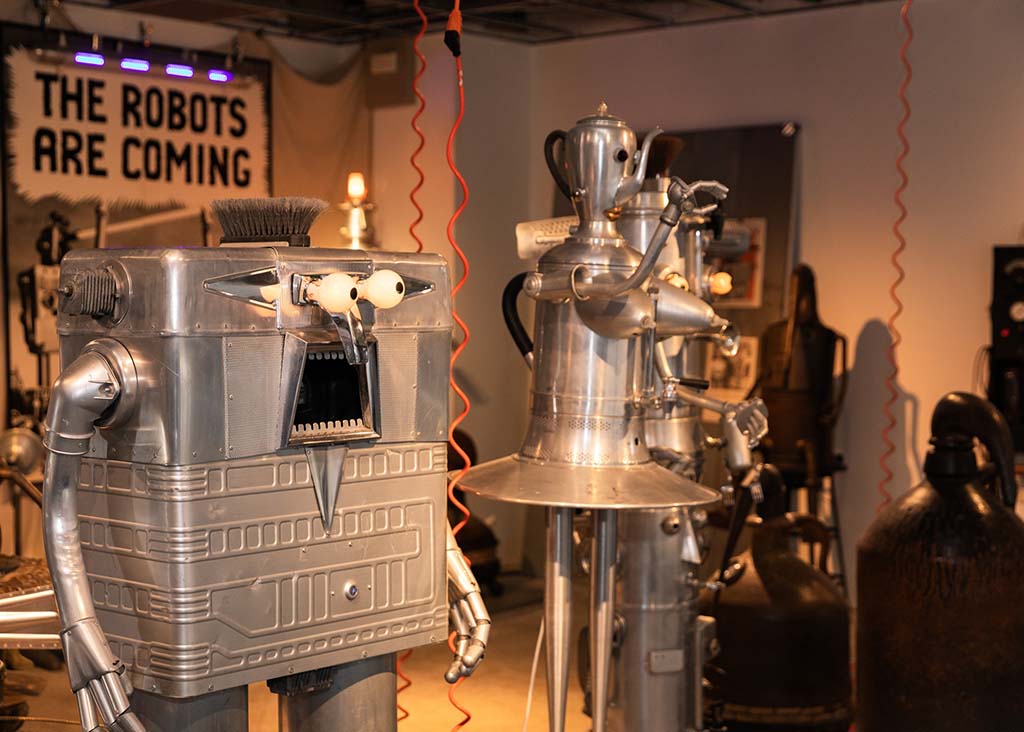
Throughout the rest of his career, Bailey swung between wildly expressive ceramics and obsessively crafted metal sculptures. This “split personality” felt perfectly natural to him; he approached every material with profound thought and a sharp instinct for how to make it shine. Bailey himself continued to shine until a stroke left him partially paralyzed in 2018. He passed away on June 6, 2020, a little more than a year after Betty, the love of his life, succumbed to cancer. He was 81 years old.
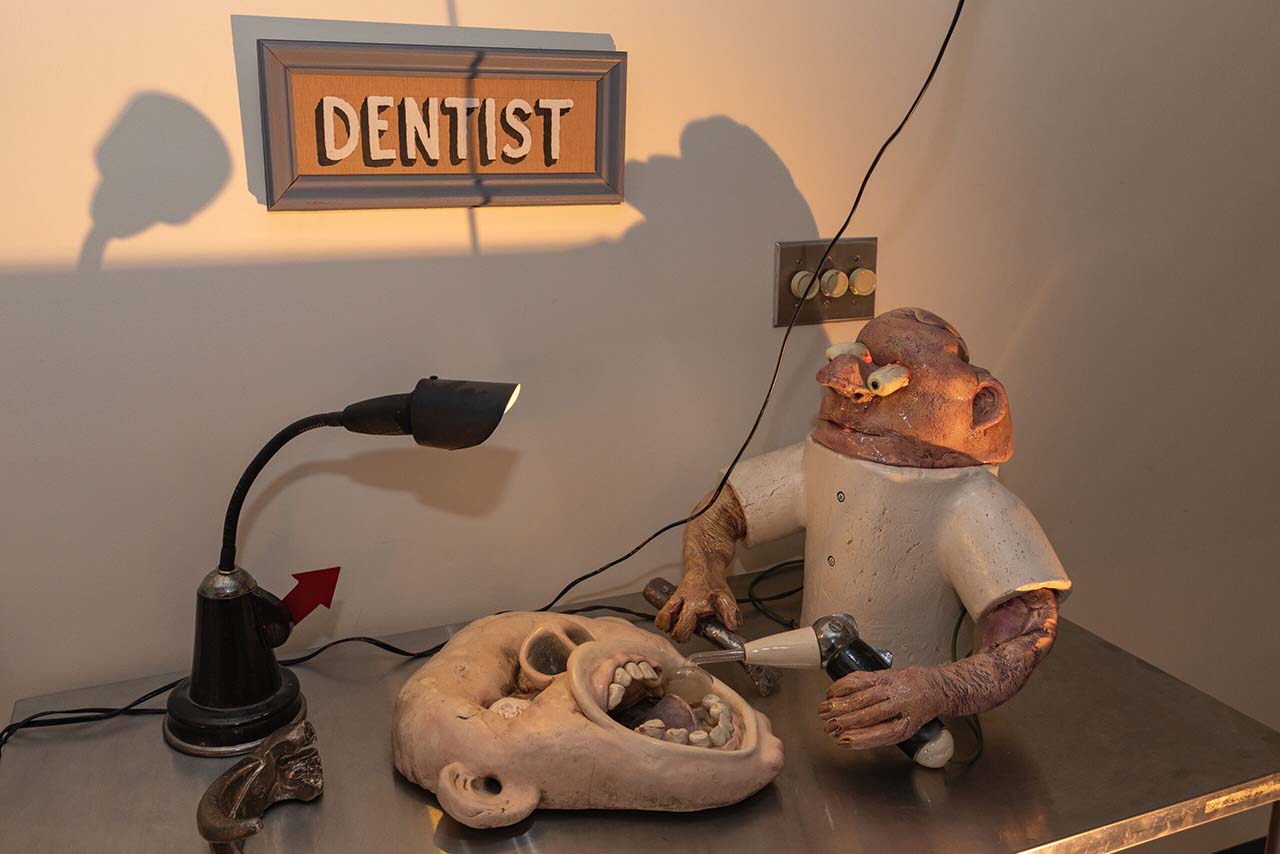
During his lifetime, Bailey’s work was exhibited in more than 150 group shows and over 30 solo exhibitions. And while the originator of so many eccentric and playful creations is no longer with us, his art lives on in the care of one of his biggest fans. Thanks to Richard Rogers and Curated Storefront, the public can visit Clayton Bailey’s World of Wonders in Akron, where the Burping Bowl bubbles, Bigfoot awaits rediscovery, and On/Off and his robot companions eagerly greet all who enter.
Step into the bizarre and brilliant world of Clayton Bailey through the eyes of Garth Johnson, Curator of Ceramics at the Everson Museum of Art—here playing the role of “Curator of Kaolithic Curiosities.”
These works—and countless others—are on view, free of charge, to any adventurous visitor. In 2025, Clayton Bailey’s World of Wonders will reopen to the public from May 1 through October. For more information, visit claytonbailey.org.

Katie Butler is an artist and educator. She received her BFA from the University of Akron and an MFA in painting from Kent State University. She is currently a part-time professor, manager of the studios and galleries at Curated Storefront, and exhibiting her work internationally.
